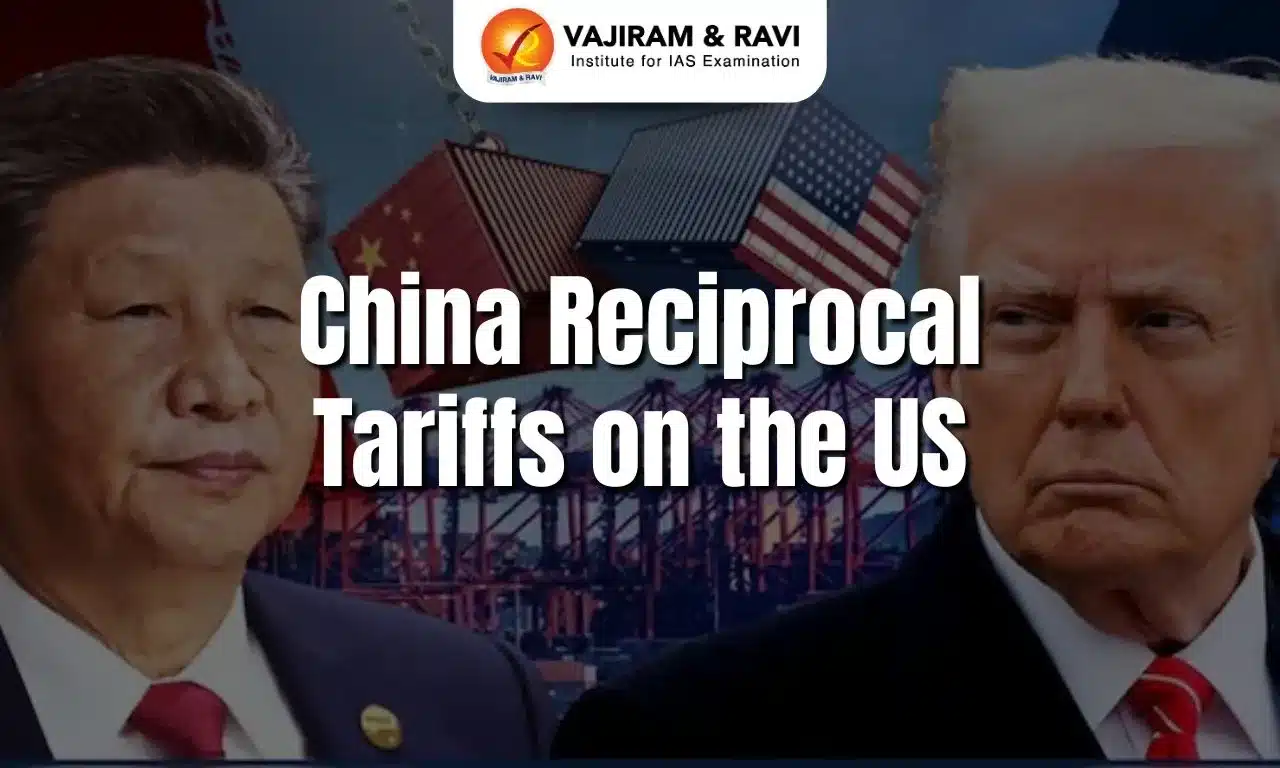Tariffs Latest News
China imposes 34% reciprocal tariffs on imports of US goods in retaliation for Trump’s trade war
About Tariffs
A tariff is a tax imposed by a government on imported goods or services to raise revenue, protect domestic industries, or influence trade balances.
Types of Tariffs
- Specific Tariff: A fixed amount charged on a particular quantity of an import (e.g., $5 per ton of steel).
- Ad Valorem Tariff: A percentage of the value of the import (e.g., 10% of the value of a car).
Purpose of Tariffs
- Revenue Generation: Governments can generate revenue by imposing tariffs on imported goods.
- Protectionism: Tariffs protect domestic industries by making foreign products more expensive, thus encouraging consumers to buy domestic goods.
- Retaliation: Tariffs are often used as retaliatory measures in trade disputes between countries.
- Strategic Influence: Used to influence trade negotiations, compel trading partners to comply with certain conditions.
Other Tariffs
- Non-Tariff Barriers (NTBs): Beyond tariffs, countries may impose other barriers to trade such as quotas, licensing requirements, and anti-dumping measures.
- Sanctions: Tariffs can be part of broader sanctions regimes aimed at pressuring countries for political or security reasons (e.g., sanctions on Iran or North Korea).
Role of WTO (World Trade Organization)
- Regulation of Tariffs: The WTO regulates the imposition of tariffs under the General Agreement on Tariffs and Trade (GATT). WTO members are committed to maintaining a tariff ceiling or bound rates.
- Dispute Resolution: The WTO provides a mechanism for resolving trade disputes, which includes reviewing whether tariffs are applied in compliance with international agreements.
Reciprocal Tarrifs FAQs
Q1. What is a reciprocal tariff?
Ans. A reciprocal tariff is a trade policy where countries impose tariffs on each other’s goods to counteract trade barriers, aiming for fair trade.
Q2. What are the four types of tariffs?
Ans. The four main types of tariffs are: Specific Tariffs, Ad Valorem Tariffs, Compound Tariffs, Most Favored Nation (MFN) Tariffs.
Q3. What is MFN in tariffs?
Ans. Most Favored Nation (MFN) status ensures that a country applies the same tariff rates to all WTO member nations, promoting non-discriminatory trade practices.
Source: CNN
Last updated on December, 2025
→ Check out the latest UPSC Syllabus 2026 here.
→ Join Vajiram & Ravi’s Interview Guidance Programme for expert help to crack your final UPSC stage.
→ UPSC Mains Result 2025 is now out.
→ UPSC Notification 2026 is scheduled to be released on January 14, 2026.
→ UPSC Calendar 2026 is released on 15th May, 2025.
→ The UPSC Vacancy 2025 were released 1129, out of which 979 were for UPSC CSE and remaining 150 are for UPSC IFoS.
→ UPSC Prelims 2026 will be conducted on 24th May, 2026 & UPSC Mains 2026 will be conducted on 21st August 2026.
→ The UPSC Selection Process is of 3 stages-Prelims, Mains and Interview.
→ UPSC Result 2024 is released with latest UPSC Marksheet 2024. Check Now!
→ UPSC Prelims Result 2025 is out now for the CSE held on 25 May 2025.
→ UPSC Toppers List 2024 is released now. Shakti Dubey is UPSC AIR 1 2024 Topper.
→ UPSC Prelims Question Paper 2025 and Unofficial Prelims Answer Key 2025 are available now.
→ UPSC Mains Question Paper 2025 is out for Essay, GS 1, 2, 3 & GS 4.
→ UPSC Mains Indian Language Question Paper 2025 is now out.
→ UPSC Mains Optional Question Paper 2025 is now out.
→ Also check Best IAS Coaching in Delhi

















